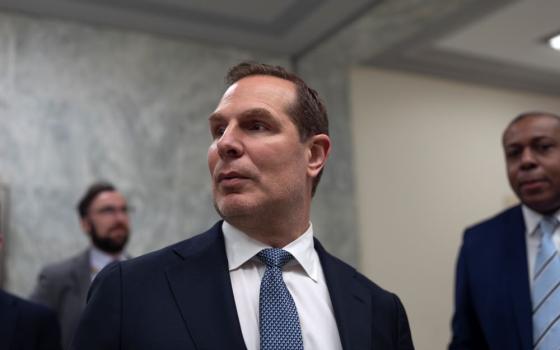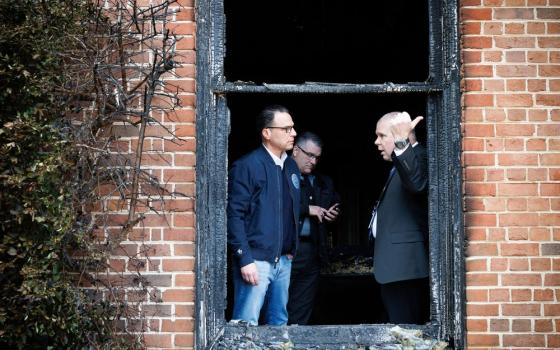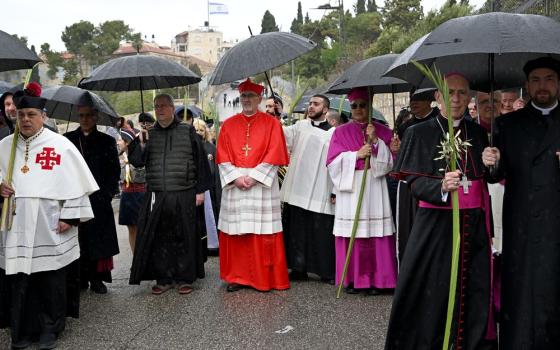Rome -- Over the course of this week, I’m offering a daily series of questions and answers in the run-up to the beatification of Pope John Paul II on Sunday. Today, we begin with perhaps the single most commonly asked question, both in the media and at the grassroots: What’s the rush? Why is this happening so fast, while other causes sometimes languish for centuries?
(In Italy, by the way, today is Pasquetta, the “little Easter,” a day recalling the meeting between an Angel and the women gathered at Jesus’ tomb. It’s a holiday here, so buona Pasquetta to all!)
The numbers on John Paul’s cause are a matter of record. The beatification comes six years and 29 days after his death on April 2, 2005, making it the fastest beatification in modern times, edging out Mother Teresa by fifteen days. In both cases, the speed was possible because the pope waived the normal five-year waiting period after the candidate’s death in order to launch the process.
Whether that amounts to a “rush,” however, lies in the eye of the beholder.
As Jesuit Fr. James Martin has observed, since there’s a documented miracle, theologically one could say that God approves the pace. Moreover, for the large swath of the population both inside and outside the Catholic church convinced John Paul II was a living saint and that canonization is a formality, the key question may not be why this is happening so fast, but rather why it’s taking so long.
An official study of John Paul’s life which led to a “decree of heroic virtue” in December 2009, authorizing John Paul to be referred to as “venerable,” collected testimony from more than 100 formal witnesses and produced a four-volume report. George Weigel recently wrote that as a result, Catholics have “far more detail into the life and accomplishments of Karol Wojty?a, Pope John Paul II, than the American electorate was offered about the life and accomplishments of Barack Obama, or the British electorate was offered about the lives and accomplishments of David Cameron and Nick Clegg.”
Further, John Paul’s beatification may be the fastest in recent times, but it’s hardly the speediest process on record. That distinction belongs to St. Anthony of Padua, who died in June 1231 and was canonized less than a year later by Pope Gregory IX. Anthony even beat out his master, St. Francis of Assisi, who was canonized 18 months after his death in October 1226 (also by Gregory IX).
In truth, those most inclined to question the “rush” often have other reasons for feeling ambivalent about John Paul II – his record on the sexual abuse crisis, for instance, or the more “evangelical” tenor of his papacy, as opposed to the spirit of internal church reform associated with the Second Vatican Council (1962-65).
Just to make the point, it’s hard to imagine many Catholic progressives would be up in arms if, say, Archbishop Oscar Romero of El Salvador had been beatified just six years after his assassination in 1980. Debate over the “how fast” of a sainthood cause, in other words, is almost always bundled with the “who” and the “why.”
That said, for an institution which typically thinks in centuries, six and a half years is nonetheless awfully quick. One can certainly wonder about the pace of the beatification without veering into theological dissent, or calling John Paul’s sanctity into question; news reports from 2008, for instance, suggested that Italian Cardinal Angelo Sodano, the erstwhile Secretary of State under John Paul II, had written to the official in charge of John Paul’s cause to express a preference for waiting while sainthood procedures are underway for other popes, including Pius XII and Paul VI.
There are at least five factors which explain the pace at which things are moving in John Paul’s case.
First, John Paul II himself overhauled the sainthood process in 1983 to make it faster, easier, and cheaper, the idea being to lift up contemporary role models of holiness for a jaded modern world. Though John Paul and Mother Teresa are unique in that they’re the only cases in which the waiting period was waived, they’re just two of more than twenty cases since 1983 in which a candidate reached beatification within thirty years after death – a list that includes a mix of the famous (Padre Pio and Josemar'a Escrivá, the founder of Opus Dei) and the relatively obscure (Anuarita Nengapeta, a Congolese martyr, and Chiara Badano, a lay member of Focolare).
In that sense, the pace of John Paul’s beatification is a natural byproduct of his own sainthood policies, which put a premium on demonstrating that sanctity is alive in the here and now.
Second, sainthood is supposed to be a democratic process, beginning with a popular conviction that a given person lived a holy life and is worthy of emulation. In the past a candidate’s fame often spread only gradually, but today the same time lag doesn’t always apply. John Paul II’s papacy skillfully exploited two of the hallmarks of today’s global village: the ubiquity of communications and the relative ease of travel. As a result, one could argue that the pace of his beatification is nothing more than a reflection of the greater speed at which everything moves in the 21st century.
Third, despite John Paul’s reforms, sainthood remains a cumbersome process. Causes which move rapidly typically have an organization behind them able to supply the resources and expertise to make the system work. Opus Dei, for example, could draw upon some of the best canon lawyers in the Catholic church in promoting the cause of its founder, and Focolare has a motivated membership with good Vatican connections behind the cause of Badano. In the case of John Paul II, the infrastructure of the Catholic church in Poland, as well as the diocese of Rome, are solidly behind the cause, ensuring that it doesn’t languish for lack of institutional support.
Fourth, the decision-makers in the church today are largely John Paul II appointees and protégés, which gives them a powerful biographical motive for wanting to see their mentor raised to sainthood during their own lifetimes. That list includes Pope Benedict XVI himself, as well as Cardinal Stanislaw Dziwisz of Krakow, Poland, the longtime private secretary of John Paul II, for whom keeping the memory of John Paul alive represents a sacred calling. Dziwisz turns 72 on April 27, making the May 1 beatification a perfect birthday gift, and there’s no question that he would like to see the canonization happen before he steps off the stage at the retirement age of 80.
Fifth, there's the simple fact of popular demand. Affection for John Paul II remains palpable around the world, and in many cases people aren't waiting for formal approval to tout him as a saint. The Italian magazine Epoca, for example, splashed the headline "The Pope Saint" across its cover this week, not sweating the difference between beatification and canonization.
t
tWill the same fast pace propel John Paul across the finish line of canonization in record time?
There are several variables involved, not least of which is the need for another documented miracle. Mother Teresa’s case might be instructive: Although pretty much everyone regards her canonization as a foregone conclusion, seven and a half years have passed since her beatification in October 2003, and the organizers of her cause are still looking for a miracle which satisfies the stringent tests of the Vatican’s Congregation for the Causes of Saints.
It’s also possible that calls could mount for caution, especially if new revelations surface about the response to the sexual abuse crisis during John Paul’s papacy. Even if none of that calls into question John Paul’s personal holiness or the towering achievements of his papacy, some might argue for waiting out of sensitivity to the reaction of victims of clerical abuse.
Finally, a striking fact about Benedict XVI’s approach to saint-making is that while he hasn’t slowed the pace of beatifications, he has showed greater patience when it comes to canonizations. John Paul approved 1,338 beatifications over 26 years, an average of 51 a year; Benedict so far has signed off on 789, or 131 a year. Yet Benedict is not canonizing people with the same frenzy. John Paul’s 482 canonizations work out to more than 18 a year, while Benedict’s 34 so far represent an annual average just under seven. That contrast could suggest a somewhat lengthier delay before John Paul II is formally declared a saint.
On the other hand, the four factors listed above to explain the rapid progress of John Paul’s beatification are all still in place, and all apply in pretty much equal measure to the prospects for a quick canonization.
In the end, Martin may have it right. If another miracle comes quickly which survives the usual medical and theological scrutiny, one could say that it’s God who keeps John Paul II on the fast track.
[John L. Allen Jr. is NCR senior correspondent. He can be reached at jallen@ncronline.org.]
Editor's Note: We can send you an e-mail alert every time John Allen's column, "All Things Catholic," is posted to NCRonline.org. Go to this page and follow the directions: E-mail alert sign-up. If you already receive e-mail alerts from us, click on the "update my profile" button to add "All Things Catholic" to your list.
More NCR coverage of the beatification of John Paul II
Maureen Fiedler: Beatifications and Politics
Michael Baxter: Biography of JPII raises questions about partiality
John L. Allen Jr.: In death as in life, John Paul a sign of contradiction
Gerald Slevin John Paul beatification highlights dysfunctional monarchy
John Allen's Beatification Q&As
#1: What's the Rush?
#2: What’s the deal with miracles?
#3: Why make saints out of popes?
#4: What’s the Divine Mercy connection?




